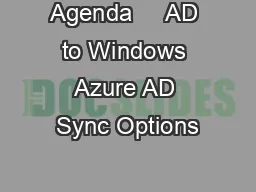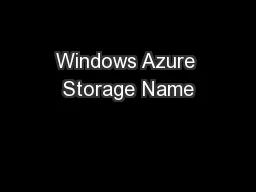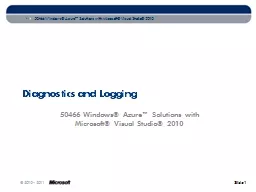PPT-Windows Azure from the Pulpit to the Whiteboard
Author : alida-meadow | Published Date : 2016-06-24
Ryan Dunn amp Wade Wegner WADB351 Example Customer with gt 300 VMs deployed and 100s of SQL Azure databases Error in DB connection logic and tight loop retry Each
Presentation Embed Code
Download Presentation
Download Presentation The PPT/PDF document "Windows Azure from the Pulpit to the Whi..." is the property of its rightful owner. Permission is granted to download and print the materials on this website for personal, non-commercial use only, and to display it on your personal computer provided you do not modify the materials and that you retain all copyright notices contained in the materials. By downloading content from our website, you accept the terms of this agreement.
Windows Azure from the Pulpit to the Whiteboard: Transcript
Download Rules Of Document
"Windows Azure from the Pulpit to the Whiteboard"The content belongs to its owner. You may download and print it for personal use, without modification, and keep all copyright notices. By downloading, you agree to these terms.
Related Documents














